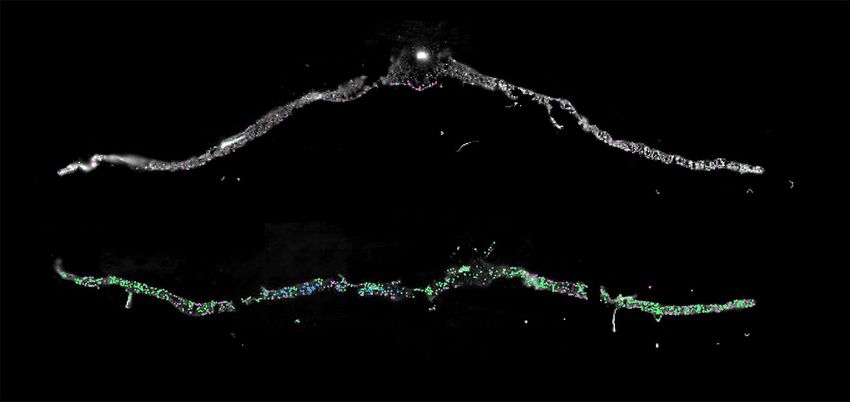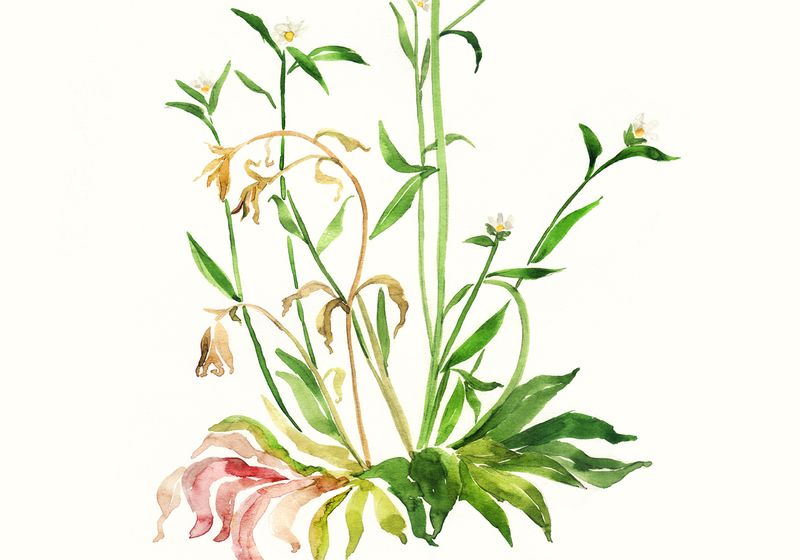Researchers at the Salk Institute investigated how Arabidopsis thaliana deals with stress, namely how it recovers from drought.
Image credit:Kasiq
Plants, firmly rooted in the soil, face numerous challenges, whether it is battling pathogens or coping with the pressures of a warming climate and drought. This has sparked significant interest among farmers and researchers in understanding how plants adapt to drought conditions.
Natanella Illouz-Eliaz, a postdoctoral researcher at the Salk Institute, studies how plants recover from stress.
Salk Institute
While researchers have identified many genes that regulate the drought response, the processes that occur during drought recovery are much less understood.1 This motivated Natanella Illouz-Eliaz, a plant biologist and postdoctoral researcher at the Salk Institute for Biological Studies, to dig deeper into the mechanisms beyond simply turning off stress responses. “We aimed to challenge the common conception and ask, ‘Are there genes that are specifically regulating the recovery process?’”
In a recent study, published in Nature Communications, Illouz-Eliaz and her colleagues found that Arabidopsis thaliana activates a preventative immune response during drought recovery, involving over 3,000 recovery-specific genes.2 Plants that had recovered from drought showed stronger resistance to pathogens than those that had been well-watered. These findings provide valuable insights into how plants bounce back from drought, offering key considerations for improving crop resilience.
First, the researchers grew A. thaliana rosettes for 30 days and then stopped watering the plants until they reached moderate drought conditions, which is defined as reduced relative soil water content to 30 percent. Then, they rehydrated the parched plants to begin the drought recovery process and collected samples throughout a six-hour period. In contrast, well-watered rosettes at the same time points served as controls.
Using single-cell and spatial transcriptomic techniques, the team observed the changes in gene expression as the A. thaliana plants recovered after drought. These shifts in expression were activated after 15 minutes of rehydration, and the majority returned to normal levels after six hours. Illouz-Eliaz remarked, “It just shows how plastic plant genomes are to respond to changes in the environment. So, you see a very strong and structured, planned response, but…it can go back to normal in several hours and continue normal development after that.” They identified more than 3,000 recovery-specific genes across all time points and different cell types within the leaves, including epidermal, mesophyll, and vascular cells.
Illouz-Eliaz initially expected to see genes related to cellular growth activated during the early stages of drought recovery, given that plants typically undergo growth arrest during drought as a survival strategy. However, to her surprise, this was not the case. Instead, she noted, “Many of the genes that turn on at the very first time point of recovery are associated with plant immunity.”
To dig deeper into this unexpected finding, the researchers grew A. thaliana under both sterile and non-sterile conditions. They then subjected the plants to drought stress followed by bacterial infection. The results revealed a consistent immune response: The infected drought-recovered plants had lower bacterial loads in their leaves.
During rehydration, parched plants need to absorb water through their pores, which unfortunately also serves as a gateway for harmful pathogens like bacteria. In this crucial phase, the researchers called this response drought recovery-induced immunity (DRII).

After 15 minutes of rehydration, Arabidopsis boosts its immune system and activates thousands of genes related to drought-specific recovery.
Salk Institute
Illouz-Eliaz and the team investigated whether other plant and crop species experienced DRII too. They examined pathogen growth in wild and domesticated tomato species that had recovered from moderate drought and were then exposed to a plant pathogen. The results showed that drought-recovered tomatoes exhibited stronger resistance to the pathogen compared to well-watered plants. These findings support the idea that DRII serves as a preventative immune response, enhancing plants’ resistance to pathogens during the early stages of drought recovery.
“We’ve known for a long time that environmental conditions affect plants’ ability to defend themselves against pathogens and attack,” said Lucia Strader, a molecular plant biologist at Duke University, who was not involved in the study. She added, “This is a very nice molecular understanding of that work and how…plants are preemptively poised to defend themselves against pathogen attack in a way that we didn’t understand prior to this.”
Building on these findings, Illouz-Eliaz plans to explore a gradient of drought stress severity and to identify genes that are important during recovery from different levels of stress. She hopes that this work provides additional insights into how researchers can “create more resilient plants by looking at a different angle to a problem,” she said.

